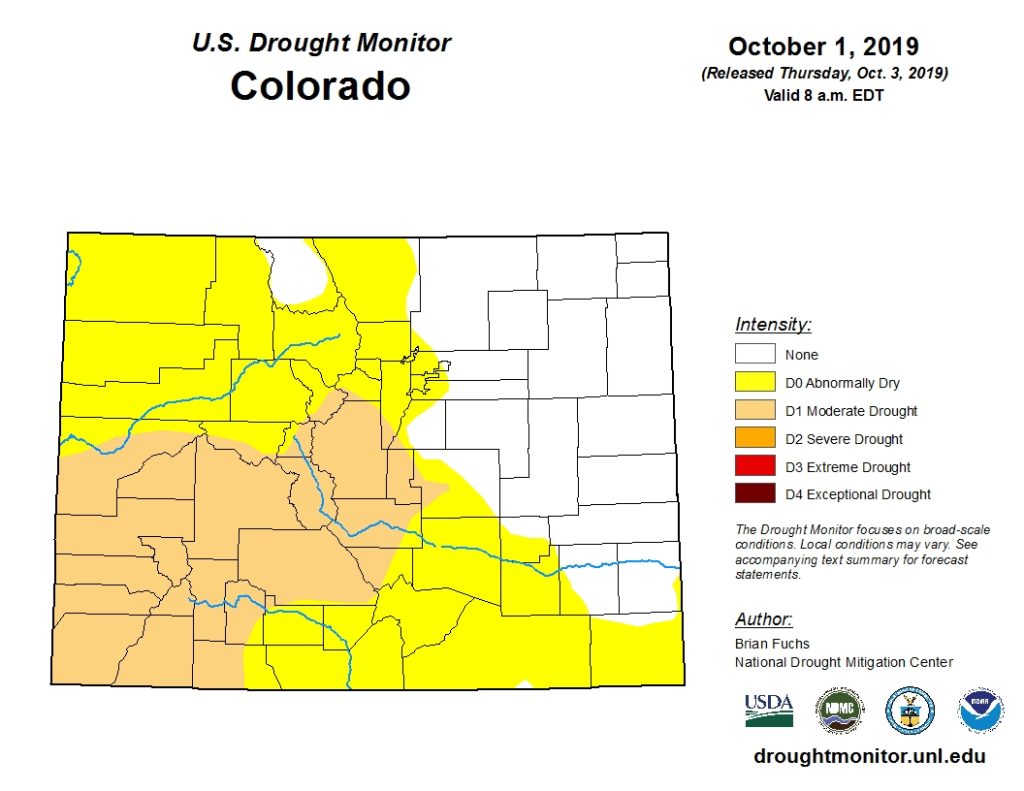
After a historically wet winter, much of western Colorado is now in a drought.
Aldis Strautins, a service hydrologist with the National Weather Service in Grand Junction, said a moderate drought has crept up from the far southwestern corner of the state to virtually all of southwest Colorado.
“In the past few months we've had a lack of precipitation, compared to what we normally have,” Strautins said. “And then higher temperatures. We've had above-normal temperatures for the past month or so overall in western Colorado.”
But he continued that this past winter’s heavy snowfall is still positively affecting the region, with many of its reservoirs close to normal, or even above normal, for this time of year.
Grand Junction has had 0.26 of an inch of rain since Sept. 1. Typically it sees an inch more than that. But Strautins said the city has still had 7.12 inches of precipitation so far this year, which is average.
Local reservoirs are mostly close to normal levels, which Strautins said is helping deflect some of the drought effects.
“We had a really good year when it comes to snowpack, last year,” he said, “and we are still working off some of that water that we had.”
The next few months in western Colorado are forecast to be wetter than normal, Strautins said. After that, predictions are less clear. But no matter the weather, he stressed that in a place as dry as western Colorado, people should be mindful of their water usage.
“We live in a semi-arid area, so we should always be taking precautions, no matter if we're have a really good wet year or are we starting to get into a dry period,” he said.








